#théodore de bry
Text
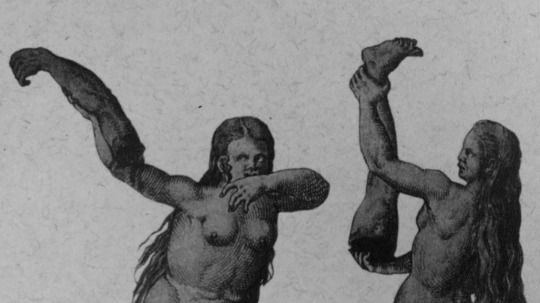
Illustration by Théodore de Bry, from the book Eat Thy Neighbour (2006).
12 notes
·
View notes
Photo
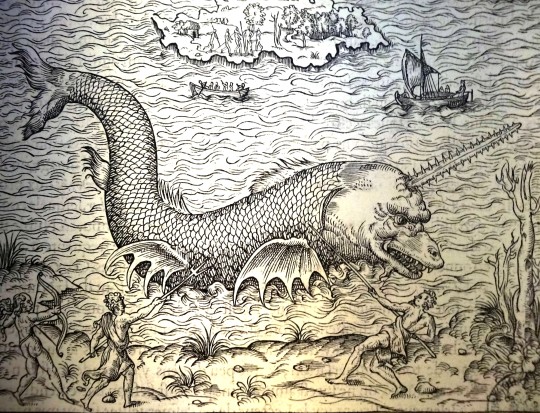
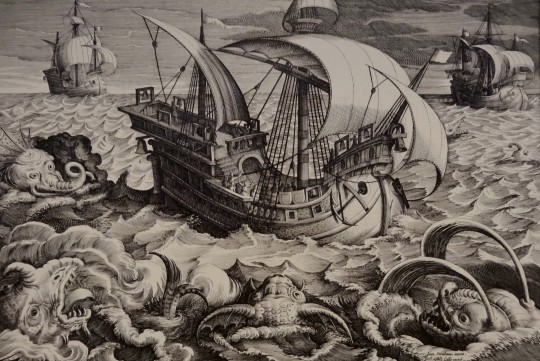

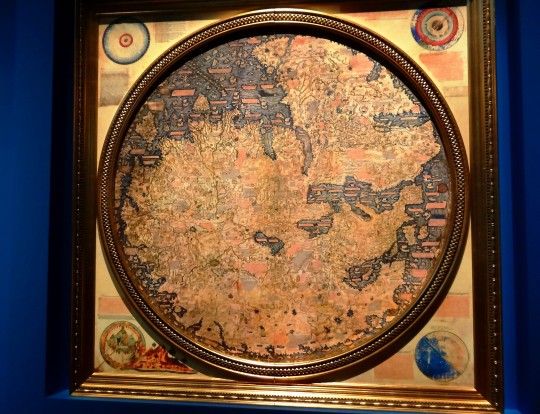
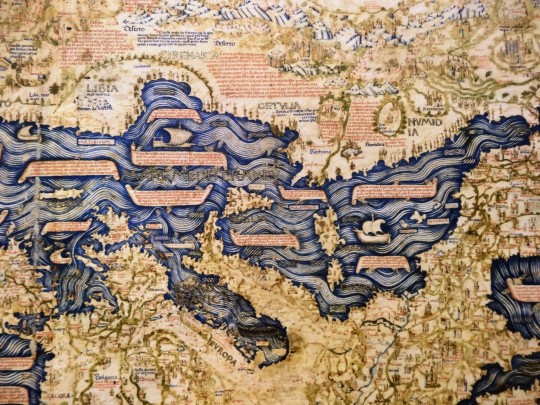


Je reviens ENCORE une fois à mon projet de présenter la plupart de mes 55800 photos (environ). On est en 2017 et comme ce blog est né en 2017, j’arriverai donc au bout de cette présentation.
Marseille en juillet. Au MuCEM, il y a l’expo “Aventuriers des Mers” :
- André Thevet : “'Le Vlétif" - France,1575
- Adriaen Collaert : “Monstres Marins" - Anvers, 1595
- Rashid Al-Din : “Jonas et la Baleine" - Tabriz,1314
- Fra Mauro - mappemonde - Venise, 1459 (oui, elle est “à l’envers”)
- id
- Théodore de Bry : “Crabes Géants" - Francfort,1598
- mappemonde - Catalogne,1450
#souvenirs#marseille#expo#MuCEM#aventuriers des mers#monstre#monstre marin#vlétif#renaissance#andré thevet#adriaen collaert#flandres#anvers#rashid al-din#jonas#baleine#tabriz#perse#fra mauro#venise#mappemonde#théodore de bry#crabe#francfort#allemagne#catalogne
3 notes
·
View notes
Text
The swinging bed of the sailor
When Columbus landed in the Bahamas in 1492 he found that the natives used nets of cotton strechted between two posts as beds. They called the hamacs, the Spanish changed it into hamaca and the English into hammocks. The hammock experienced truly extensive use under Francis Drake, where it was enlisted in the Royal Navy and was even used during WW II. Before the introduction of hammocks sailors slept on deck. During rough weather they would be thrown about and were often injured.
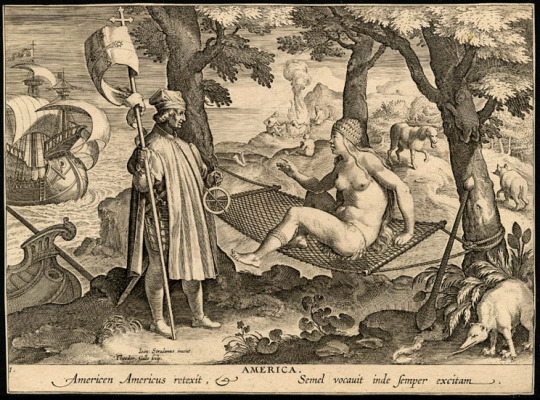
Amerigo Vespucci awakens a sleeping America- by Jean-Théodore de Bry 1575
The hammock was a vast improvement as it wraps around the sailor like a cocoon, making it virtually impossible to fall out of ; and it moves in concert with with the rolls of the ship. ( A ship rolls not rock !), while gravity keeps it in line with the others. Hammocks were slung fore and aft, each at a numbered ped so that the sleeper was always in the same place and could be found quickly if needed. The offical allocation of hammock space was 36 cm per man, or 71cm if the man was a petty officer.
However, with the two-watch system half the crew was on deck at any one time, so each man had twice that, in effect as much space as someone sharing a double bed today.
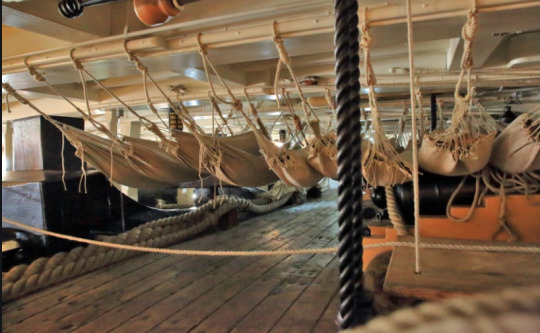
Some Hammocks on board of HMS Victory
Arround 1800 each man had two hammocks, to allow for cleaning. There were made of canvas 1,8m by 0,9m and in each was a mattress mad from flock or rags, a blanket and a coverlet. Hammocks belonged to the Navy Board and the men either brought bedding with them or purchased it from the purser.
Each morning hammocks were taken down and lashed with seven marling hitches, representing the seven seas. They were carried topsides to be stowed and aired, where they were put on special netting at the side of the ship to act as protection from musket balls under enemy fire. Hammocks could also serve as life preservers; one thrown to a man overboard could keep him afloat for a while. If a seaman died at sea he was sewn into his hammock with one or two round shot at his feet- and the last stich through his nose.
395 notes
·
View notes
Text
Un retrato hecho con letras
Un retrato hecho con letras
Sinopsis
Tríptico de la Infamia relata las complejas relaciones entre el Viejo y el Nuevo Continente en los primero años de vida de América, con el convulsionado siglo XVI como telón de fondo.
Tres pintores europeos narran la historia, Jacques Le Moyne, cartógrafo y pintor de Diepa; François Dubois, pintor de Amiens, y Théodore de Bry, grabador de Lieja, se enfrentan por distintos caminos a la…
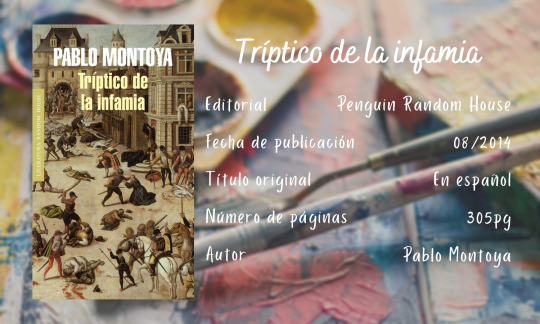
View On WordPress
#américa#books#colonia#conquista#el archivo del dragón#europa#historia#libros#no ficción#novela histórica#opinión#Pablo Montoya#pintores#reseña#Tríptico de la Infamia
0 notes
Photo

Théodore de Bry (1528 - 1598) - Et Follie Orgville ca. 1578
https://commons.wikimedia.org/wiki/File:Th%C3%A9odore_de_Bry_-_Et_Follie_Orgville_-_Google_Art_Project.jpg
http://metmuseum.org/art/collection/search/424067
13 notes
·
View notes
Photo

De Bry, Jean Théodore - FLORILEGIUM NOVUM, 1612.
Source: Sotheby’s.com
20 notes
·
View notes
Text
“October is LGBT history month. Our LGBT history has largely been hidden and we should celebrate it.”
“In North America before Contact, diverse sexualities and gender identities were not only tolerated, they were celebrated. That is, until racist Europeans arrived with their homophobic and transphobic laws and religion.”
“On this day in 1513 in what is now the Panamanian province of Quarenca, the Spanish explorer Vasco Núñez de Balboa had an indigenous chief and 40 of his people killed by dogs. Balboa had concluded that the natives were all “sodomites.” Antonoio de la Calancha, a Spanish official in Lima, praised Balboa’s barbaric savagery at the time as the “fine action of an honorable and Catholic Spaniard.”
“The scene was depicted in a notorious engraving in “Grands Voyages”, a 1594 publication about European exploration by Théodore de Bry. De Bry was a Protestant native of Liège.”
“Spain and the Catholic Church owe an apology to LGBT people for their brutal treatment of our communities.”
Original Facebook post by Douglas Elliott (October 4th)
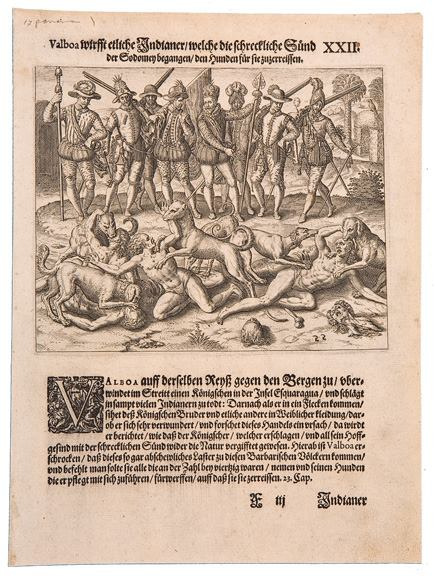

#indigenous people's day#two-spirit#lgbtq#first nations#indigenous#native american#history#white terrorism#christian terrorism#colonialism#imperialism#homophobia#transphobia#sexism#racism#columbus day#genocide
0 notes
Photo

1564. Jacques Le Moyne, pittore e cosmografo, salpa dal porto di Le Havre al seguito della prima missione protestante destinata a colonizzare l'America. Dal folgorante incontro con gli indigeni e con la loro pittura e dal tragico esito della missione, schiacciata con ferocia dall'armata della cattolicissima Spagna, nasceranno le prime testimonianze visive europee sugli usi e i costumi dei nativi. In fuga da un Eden tutt'altro che bucolico, Le Moyne riuscirà a portare in salvo le sue preziose tavole al ritorno in Europa. 1580 circa. Francois Dubois, pittore protestante originario di Amiens, è sfuggito alla notte di San Bartolomeo nel 1572, dove ha perso la moglie e il figlio che portava in grembo. Rifugiatosi a Ginevra, realizzerà in punto di morte il più celebre dei quadri sulla strage dei protestanti francesi. 1578. Théodore de Bry, maestro incisore originario di Liegi, inizia il suo lungo pellegrinaggio per l'Europa per sfuggire alle persecuzioni dei protestanti. Da Anversa a Londra a Francoforte, nel periplo che lo porta a incrociare i sentieri di Le Moyne e Dubois in epoche diverse della sua vita, arriverà a scoprire l'America attraverso le parole di denuncia dei pochi spagnoli che hanno avuto il coraggio di condannare lo sterminio perpetrato in nome dell'oro e della religione. Grazie alla sua serie di incisioni dedicate ai viaggi oltreoceano e al massacro di San Bartolomeo, le tavole di Jacques Le Moyne e di Francois Dubois e le due grandi stragi che le hanno ispirate entreranno per sempre nella storia. #libridisecondamano #ravenna #bookstagram #booklovers #bookstore#instabook #igersravenna #instaravenna #ig_books (presso Scattisparsi Store)
#bookstagram#instabook#booklovers#bookstore#libridisecondamano#instaravenna#ig_books#ravenna#igersravenna
1 note
·
View note
Photo

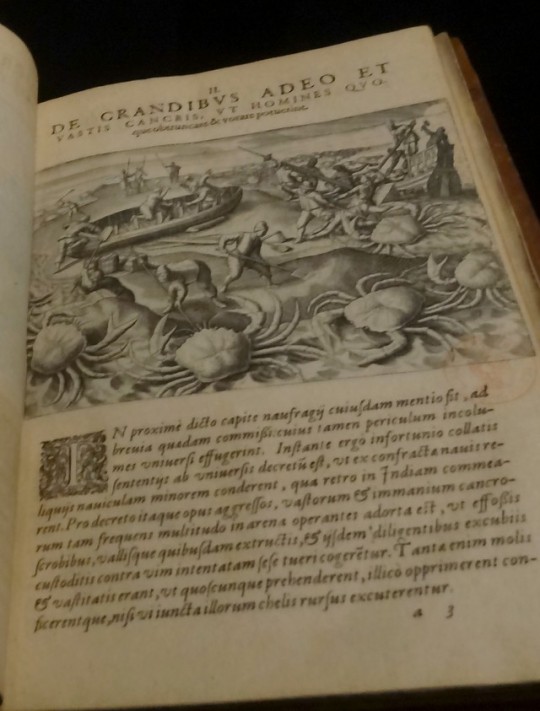



Série sur les livres. Encore des livres anciens
- Marseille, musée Longchamp
- Marseille, MuCEM, expo “Aventuriers des Mers" - Théodore de Bry: "Crabes Géants" - Francfort,1598
- Louvre-Lens, Expo “Animaux et Pharaons" - Nicolas Huet : "Description de l'Egypte - l'Aspic", 1809
- Paris, musée du Quai Branly, expo “Tatoueurs et Tatoués" - Joseph Kabris de Bordeaux, premier tatoué européen de spectacle - 1817
- Marseille, Alcazar, expo "Portulans"
#livre#livre ancien#Marseille#MP2013#palais longchamp#MuCEM#histoire naturelle#coquillage#aventuriers des mers#théodore de bry#crabe#monstre#Louvre-Lens#expo#animaux et pharaons#nicolas huet#description de l'égypte#Egypte#aspic#serpent#dessin#Pars musée#quai branly#branly#tatouage#tatoueurs et tatoués#joseph kabris#tatoué#alcazar#bibliothèque de l'alcazar
1 note
·
View note
Photo


Théodore de Bry. Et Follie Orgville. 1578.
#théodore de bry#engraving#et follie orgville#cooper hewitt#16th century#google art project#magictransistor#alejandromerola#1578
521 notes
·
View notes
Text
Théodore de Bry
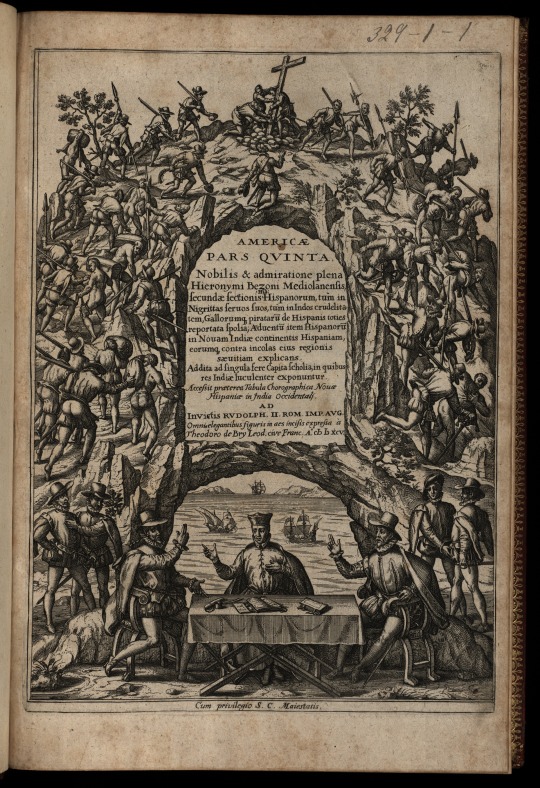
Parmi les trésors de la Bibliotheca Bodmeriana figure l’un des monuments de la littérature géographique de la Renaissance : la collection des Grands et Petits voyages (India Occidentalis et India Orientalis) de Théodore De Bry. Initiée par le graveur et éditeur réformé en 1590 et poursuivie par ses descendants jusqu’en 1634, cette vaste entreprise de publication se démarque essentiellement par les splendides gravures sur cuivre qui illustrent quelque cinquante relations de voyages à travers le globe, répartis en vingt-cinq volumes. Traduits en latin et parfois détournés de leur version originale, ces récits sont agrémentés de près de 600 planches donnant à voir au lecteur européen, souvent pour la première fois, les étrangetés du Nouveau Monde, de l’Afrique, de l’Asie et des océans. Ce billet est le premier d’une série consacrée à la collection de Bry de la Bodmeriana, récemment numérisée par le Bodmer Lab. Plusieurs illustrations seront reprises ici et commentées par Matthieu Bernhardt (Chargé d’enseignement, UNIGE).
Bry, Theodor de Benzoni, Girolamo. Americae pars quinta : Nobilis & admiratione plena Hieronymi Bezoni Mediolanensis, secundæ sectionis Historiæ Hispanorum, [...]. Francofurti : A., 1595. Collectiones peregrintationum in Indiam occidentalem et orientalem : Série I, partie 5.
#bodmerlab#bodmer#bibliophile#rare books#littérature#literature#De Bry#book#books#digitization#numérisation#digital humanities#unige#geography
1 note
·
View note